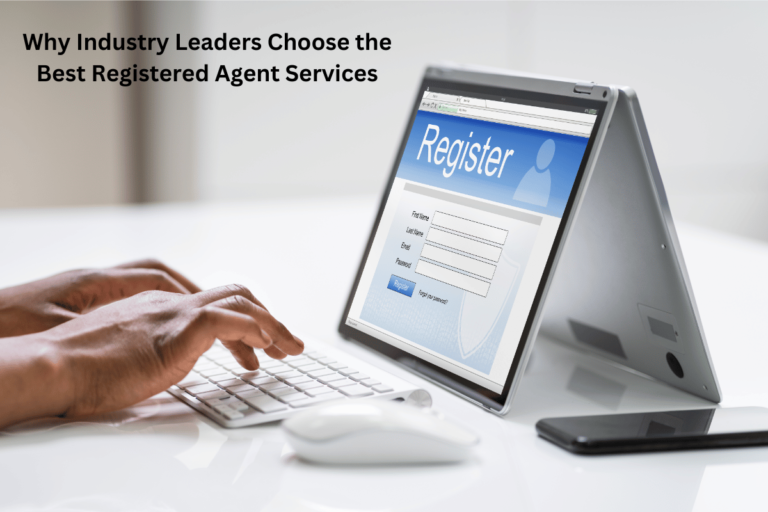How to Start a Business in E-Commerce
To kickstart an e-commerce business, start by pinpointing a profitable niche aligned with market trends. Conduct thorough research to identify your target audience’s needs and tailor your offerings. Next, carefully select an e-commerce platform with user-friendly features and scalability for future growth. Integrate secure payment gateways for seamless transactions. Implement SEO strategies, develop a robust marketing plan, manage inventory efficiently, and prioritize exceptional customer service. This strategic approach sets the foundation for a successful online venture. Mastering these steps will bring you closer to creating a thriving e-commerce business.
Key Takeaways
- Find a profitable niche aligned with market demand.
- Choose the right e-commerce platform for scalability.
- Implement SEO strategies for online visibility.
- Focus on user-friendly interface and mobile responsiveness.
- Prioritize excellent customer service for retention.
Finding Your E-Commerce Niche
To successfully start your e-commerce business, begin by identifying a profitable niche that aligns with your interests and market demand. Niche selection is vital for standing out in the competitive e-commerce landscape. Conduct thorough market research to understand current trends, identify gaps in the market, and discover opportunities for growth.
Product differentiation is key to attracting customers to your online store. Determine what sets your products apart from competitors and highlight these unique selling points. By offering something distinct, you can appeal to a specific target audience looking for what you have to offer.
Identifying your target audience is essential for tailoring your marketing efforts effectively. Understand the demographics, preferences, and behaviors of your potential customers. This knowledge will help you create targeted marketing campaigns and optimize your product offerings to meet the needs and desires of your audience.
Building Your Online Store
To establish a successful online store, you must carefully select the right e-commerce platform that aligns with your business needs and goals.
Focus on designing a user-friendly interface that enhances the overall shopping experience for your customers.
These two key points are essential in creating a solid foundation for your e-commerce venture.
Choose E-Commerce Platform
Choosing the appropriate e-commerce platform is essential when setting up your online store as it will greatly impact your business’s functionality and success. Two important factors to take into account are platform customization and customer support. A platform that allows for easy customization of your online store to match your brand’s identity and unique features can enhance customer engagement and loyalty. Additionally, reliable customer support ensures that any technical issues or queries are promptly addressed, maintaining the smooth operation of your online store.
When selecting an e-commerce platform, scalability and pricing options are also significant. Scalability is crucial for accommodating future growth, ensuring that the platform can handle increased traffic and transactions as your business expands. Furthermore, evaluating the platform’s pricing structure is essential to align with your budget and profitability goals. Balancing scalability with cost-effective pricing options is key to maximizing your business’s potential while keeping expenses manageable.
Consider the following factors when choosing an e-commerce platform:
| Factors | Description |
|---|---|
| Platform Customization | Ability to personalize your online store. |
| Customer Support | Availability of reliable technical assistance. |
| Scalability | Capacity to grow and handle increased demands. |
| Pricing Options | Flexible and cost-effective pricing plans. |
Design User-Friendly Interface
Consider the importance of designing a user-friendly interface when building your online store to enhance customer experience and drive engagement. Interface customization plays a vital role in creating a seamless user experience. Tailoring the layout, color scheme, and overall design to align with your brand identity can help users navigate your site effortlessly.
Prioritize user experience by ensuring easy access to product categories, search bars, and clear calls-to-action.
Mobile optimization is key in today’s digital landscape. With a growing number of users accessing websites via mobile devices, it’s vital to make your online store mobile-friendly. Implement responsive design elements to adapt your interface to different screen sizes and enhance the overall user experience.
Navigation design is another critical aspect to consider. A well-structured navigation menu can greatly impact how users interact with your online store. Organize your product categories logically, provide filters for easy searching, and include a visible shopping cart icon for quick access.
Choosing the Right E-Commerce Platform
When selecting the appropriate e-commerce platform for your business, it’s essential to compare the features each platform offers to make sure they align with your specific needs.
Look for a user-friendly interface that will make it easy for you to manage your online store efficiently. Additionally, consider the ease of integrating different payment gateways to provide a seamless checkout experience for your customers.
Platform Features Comparison
Choosing the perfect e-commerce platform for your business necessitates a thorough assessment of key features and functionalities. When comparing platform pricing, consider not just the initial costs but also any hidden fees and scalability options for future growth.
Look for platform customization options that allow you to tailor the site to your brand’s unique needs and aesthetic. Additionally, assess platform integrations to confirm compatibility with essential tools like payment gateways, inventory management systems, and marketing software.
Strong platform customer support options, including 24/7 assistance and detailed resources, can be invaluable in resolving issues quickly and efficiently. Prioritize platforms that offer a balance of affordability, flexibility, and support to meet your business’s requirements effectively.
User-Friendly Interface Selection
To select the right e-commerce platform for your business’s user-friendly interface, prioritize evaluating the intuitive design and navigation options available. When choosing an e-commerce platform, keep in mind the importance of interface customization and user experience optimization. Here’s a strategic approach to selecting the right platform:
- Interface Customization: Look for platforms that offer easy customization of the interface to match your brand’s aesthetics and requirements.
- User Experience Optimization: Opt for platforms that provide smooth navigation, clear product categorization, and a seamless checkout process to enhance the overall user experience.
- Mobile Responsiveness: Make sure the platform is mobile-responsive, allowing customers to shop conveniently on various devices.
- Integration Capabilities: Consider platforms that offer integration with other tools and software that can further enhance user experience and streamline business operations.
Payment Gateway Integration
Assess the e-commerce platform‘s compatibility with various payment gateways to guarantee seamless integration and secure transactions for your business. When choosing the right e-commerce platform, prioritizing payment security is vital. Confirm that the platform supports reputable payment gateways known for their robust security measures to protect both your business and customers’ sensitive information. Additionally, consider working with ISO agents to explore and implement the most secure and efficient payment processing solutions tailored to your business needs.
Integrating a payment gateway that complies with industry standards for data encryption and fraud prevention is essential to build trust and credibility with your online audience.
Additionally, consider the transaction fees associated with each payment gateway. Some gateways may charge a flat fee per transaction, while others may have varying fee structures based on factors like transaction volume or card type. Analyze these fees in relation to your projected sales volume to determine the most cost-effective option for your business.
Setting Up Payment Gateways
When establishing your e-commerce business, setting up payment gateways is a crucial step in facilitating secure and seamless transactions for your customers. To guarantee a successful setup, consider the following key points:
- Payment Gateway Options: Research and select a payment gateway provider that aligns with your business needs. Compare factors such as transaction fees, supported payment methods, and compatibility with your e-commerce platform.
- Security Measures: Prioritize security by choosing a payment gateway that offers robust encryption, fraud prevention tools, and compliance with industry standards like PCI DSS. Secure transactions build customer trust and protect sensitive data.
- Payment Processing: Configure your payment gateway settings to streamline payment processing. Customize features like currency conversion, recurring billing options, and automated chargebacks to enhance the customer experience.
- Customer Trust: Transparently communicate the payment process to your customers. Display trust badges, provide multiple payment options, and offer secure checkout experiences to instill confidence and loyalty in your brand. Building trust increases conversions and fosters long-term relationships with your audience.
Implementing SEO Strategies
Research and implement SEO strategies to optimize your e-commerce website’s visibility and attract organic traffic effectively. SEO optimization is essential for improving your site’s search engine ranking and driving more potential customers to your online store.
Begin by conducting thorough keyword research to identify relevant terms and phrases your target audience is searching for. Integrate these keywords naturally into your website’s content, product descriptions, and meta tags to enhance visibility.
In addition to keyword research, focus on content marketing to provide valuable and engaging information that resonates with your audience. Regularly update your blog with industry-related articles, product guides, and customer testimonials to build credibility and attract backlinks from reputable sites.
Backlink building is an important aspect of SEO that can have a significant impact on your website’s authority and ranking on search engine results pages.
Developing a Marketing Plan
Developing a thorough marketing plan is crucial for successfully promoting your e-commerce business and reaching your target audience effectively. To guarantee your marketing efforts are strategic and impactful, consider the following key strategies:
- Social Media Marketing: Utilize platforms like Facebook, Instagram, Twitter, and LinkedIn to engage with your audience, drive traffic to your website, and build a strong online presence.
- Email Campaigns: Implement targeted email campaigns to nurture leads, promote new products or services, and enhance customer retention through personalized communication.
- Influencer Partnerships: Collaborate with influencers in your industry to leverage their reach and credibility, effectively reaching a wider audience and boosting brand awareness.
- Affiliate Marketing: Set up an affiliate program where partners promote your products or services in exchange for a commission on sales, expanding your reach and driving more conversions through third-party endorsements.
Managing Inventory and Fulfillment
To effectively run your e-commerce business, meticulous management of inventory and fulfillment processes is essential for ensuring smooth operations and customer satisfaction. Inventory management plays an important role in maintaining adequate stock levels to meet customer demand while avoiding overstock situations.
Utilizing effective inventory tracking systems can help you monitor stock levels, identify popular products, and forecast future inventory needs accurately.
When it comes to fulfillment, efficient shipping logistics are essential for timely order processing and delivery. Implementing streamlined shipping processes and working closely with reliable shipping partners can help optimize your fulfillment operations.
Order tracking is another significant aspect that directly impacts customer satisfaction. Providing customers with order tracking information allows them to monitor the status of their purchases, fostering transparency and trust.
Providing Excellent Customer Service
Guarantee that your e-commerce business excels by prioritizing exceptional customer service as a vital component of your operational strategy. Providing excellent customer service is essential for customer retention and building a positive brand reputation.
Here are four key strategies to make sure your e-commerce business excels in customer service:
- Personalized Communication: Engage with customers on a personal level by addressing them by name in emails and offering tailored product recommendations based on their purchase history.
- Efficient Handling of Returns: Make the returns process hassle-free for customers by providing clear return instructions, easy-to-print return labels, and prompt refunds to enhance customer satisfaction.
- 24/7 Customer Support: Offer round-the-clock customer support through multiple channels such as live chat, email, and phone to address any queries or concerns promptly.
- Proactive Problem Resolution: Anticipate potential issues and proactively reach out to customers to resolve any issues before they escalate, demonstrating your dedication to exceptional customer service.
Frequently Asked Questions
How Can I Protect My E-Commerce Business From Cyber Threats?
To protect your e-commerce business from cyber threats, implement thorough cybersecurity measures such as encryption, firewalls, and regular security audits. Develop inclusive risk management strategies that include employee training, data backup procedures, and incident response protocols.
What Are the Legal Requirements for Starting an E-Commerce Business?
To start an e-commerce business, you need to obtain necessary business licenses, apply for a Tax ID, consider trademark protection for branding, and draft clear website terms to protect your business and customers.
How Do I Handle Returns and Refunds in E-Commerce?
When handling returns in e-commerce, think of your return policies as a safety net, like a trampoline that secures customer satisfaction. Streamline the refund process for managing expectations, building trust, and boosting loyalty.
What Are the Best Practices for E-Commerce Shipping and Logistics?
When it comes to e-commerce shipping and logistics, it’s essential to optimize your supply chain. Evaluate fulfillment options like dropshipping, in-house fulfillment, or third-party logistics providers. Streamlining these processes can enhance customer satisfaction and operational efficiency.
How Can I Scale My E-Commerce Business for Future Growth?
To scale your e-commerce business for future growth, focus on implementing effective marketing strategies to reach a broader audience and enhance customer retention through personalized experiences. Utilize data analytics to optimize operations for sustainable expansion.
Conclusion
Now that you have all the tools and knowledge to start your e-commerce business, take the next step and immerse yourself in the world of online retail.
Just like Sarah, who turned her passion for handmade jewelry into a successful online store, you too can build a thriving business in your chosen niche.
Remember to stay focused, be strategic in your approach, and always prioritize providing exceptional customer service to stand out in the competitive e-commerce market.







